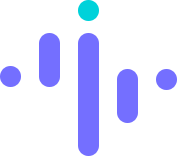
The popularity of remote work among employees is huge, and the companies see the benefits as well. But, this work model certainly has its disadvantages. The main one is the potential for a drop in employee engagement and creativity in remote teams.
53% of remote teams report that they find it more difficult to connect to colleagues when working remotely. They also say this lack of connection hinders their desire for collaboration and the ability to be creative.
Yet, this phenomenon is not irreversible. With the right strategies and tools, leaders can boost their remote team’s collaboration and creativity.
In this article, we discuss several proven methods that can help you improve teamwork and ingenuity within your organization. We will also mention the categories of necessary tools to support the implementation of these methods. These involve communication platforms, cloud solutions, and work tracking solutions.
Supporting Collaboration
Leaders are often afraid that collaboration will suffer the most within a remote environment. This fear doesn’t have to come true. All it takes is good planning and openness to feedback from your teammates. Here are a few aspects that you should pay attention to:
Clear Communication
Good communication is the first pillar of successful collaboration. Still, copying the communication style from the office to a remote setting isn’t doable or effective.
Check out this list of strategies that can help you improve remote team communication:
- Strive to keep your meetings productive. Plan ahead and send an agenda before the meeting. This way everyone can prepare so that the meeting runs smoothly.
- End meetings with a recap. At the end of every lengthy meeting, restate what your team decided and repeat the tasks for every member. This way everyone will have a clear next step.
- Think about starting daily stand-ups. Starting every day with a quick 15-minute recap of what was finished and what needs to be done simplifies organization. It also keeps all members accountable regardless of their remote work.
- Introduce a camera-on policy. This primarily applies to longer team-level meetings. As a lot of communication happens on a non-verbal level, a video feed will help you keep that positive aspect of in-office collaboration.
- Find a healthy dose of meetings. Some teams might not benefit from frequent meetings as they disrupt their deep work. Talk to your employees to find the right amount of video updates and discussions.
Collaboration Platforms
From file sharing to idea storage, every remote team needs one or several platforms that can facilitate all the processes. Take a look at a few types of platforms that can enhance your remote team’s collaboration:
- Cloud Storage: Providing a platform for cloud storage enables all employees to access any file they need while working remotely. This sort of platform also facilitates both real-time and asynchronous collaboration and improves transparency. It also eliminates the tedious file downloading, editing, and sending back and forth.
- Project-Tracking Tools: These tools improve the visibility of task progress. They also help keep the whole team informed about project deadlines, expectations, and each team member’s responsibilities. Enable and encourage comments, constructive criticism, as well as praise of a colleague’s good work on these platforms to further improve team collaboration.
- Digital Whiteboards: These platforms, such as Miro, offer templates and room for visual online collaboration. In addition, they allow multimedia content all with the aim of sparking new ideas and thinking out of the box.
- Digital Mind Maps: These tools serve similar purposes as whiteboards. Yet, they provide more structure and make it easier to draw connections between ideas, tasks, and processes. They often come with commenting options, which further improve collaboration and the quality of your team’s brainstorming sessions.
Nurture Creativity
Creativity is elusive, especially in rigid work environments. This is why office-based employees get their best ideas while away on holiday or taking a long stroll at the weekend.
The remote work model has much more room for deep work and creativity. The key is knowing how to approach your remote workforce. Here are three proven strategies to foster creativity:
Encourage Informal Meetings
Friendly informal banter is how colleagues connect. While the office environment allows for this form of bonding, remote work doesn’t offer too many opportunities for it.
This is why managers and leaders need to step in and remind employees that it’s good to connect outside of formal meetings.
HR personnel can organize virtual games or coffee breaks where team members can get to know each other better.
Allow Flexibility
When switching to remote work, introduce a flexible workday with some fixed core hours. This way, your employees will have the advantage of working when they feel most productive. At the same time, teamwork won’t suffer since the obligatory core hours will allow for the necessary collaboration.
Are you worried that the dedication of your employees will dwindle once you move on to flexitime? Don’t be! There are reliable tools for work tracking that allow you to track every hour of their workday.
By allowing flexible work hours and openly sharing how and why you are using the tracking tools, you can improve the sense of autonomy and accountability within your team.
Organize Brainstorming Sessions
Remote setting gives you an opportunity to provide a more friendly environment for all your employees to share their ideas.
You can open a channel during the session for anonymously sharing ideas that will remain open for future thoughts. This way, less assertive people or insecure juniors will also have an opportunity to share their thoughts.
Make sure your channel for idea sharing allows commenting or discussion. This way there’s more room for improvement or development of the raw material.
Also, don’t delete paused or discarded ideas. It’s good to have an archive of all of them since they can easily help spark new, better ideas.
Conclusion
When it comes to collaboration and team creativity, remote work has both benefits and drawbacks.
To leverage the advantages and conquer the disadvantages, it will take some trial and error. Your main weapon is knowing your team and keeping the communication with all of them open and transparent.
Over time, through some of these methods and software, you will be able to fine-tune your remote collaboration and creativity-boosting practices.
 Author: Insightful.io has been building workforce analytics software that nurtures sustainable productivity, improves remote work and fosters healthier work habits, since 2016.
Author: Insightful.io has been building workforce analytics software that nurtures sustainable productivity, improves remote work and fosters healthier work habits, since 2016.
1452 Views












